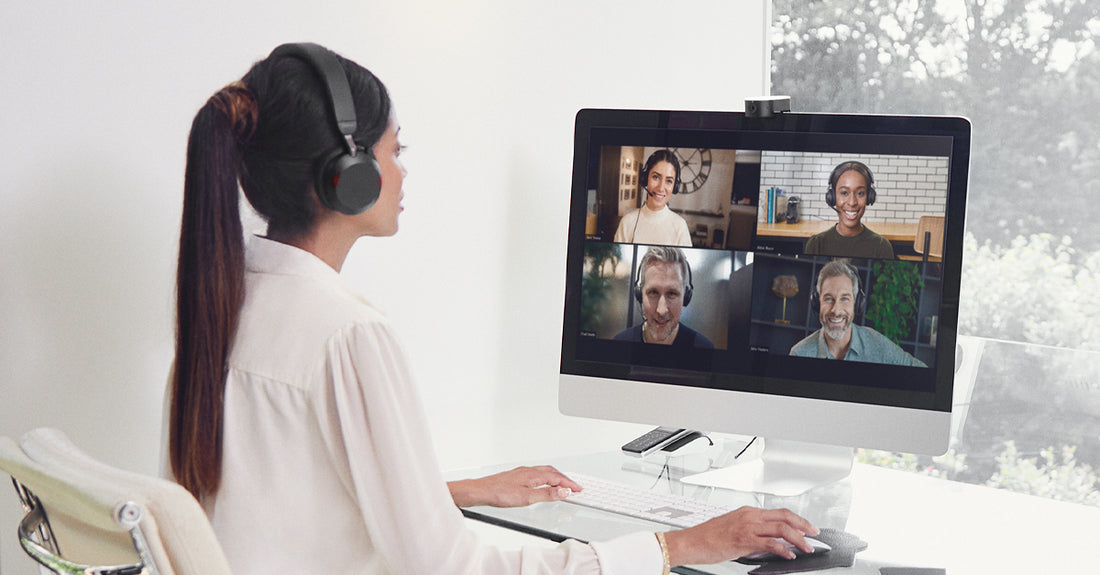Leveraging video for productivity gains in remote work
Jabra’s 2020 Work From Home Survey found that during the initial Covid-19 lockdown, 76% of knowledge workers were using video during meetings. The rapid transition from in-person to virtual meetings forced organizations to adopt new tools and techniques for staying connected. And for the most part, most organizations managed to institute new ways of working that ensured business continuity and even growth through what was otherwise a very challenging and disruptive period. In fact, 94% of businesses claim that video conferencing has increased their business’s productivity.
Hybrid work poses new challenges for video collaboration
As we transition to more permanent hybrid working arrangements, where some employees will be physically in the room while others join the meeting from home or a third location, organizations will face a new set of challenges related to video meetings. One of the biggest problems facing leaders right now is how to make sure that meetings aren’t dominated by in-person participants – that everyone should feel equally empowered to speak their mind.
While implementing strategies to build psychological safety and emotional support in virtual environments should be a major focus for leaders, they must also consider how technology will be key in overcoming this meeting asymmetry. In fact, Jabra’s Hybrid Ways of Working 2021 Global Report shows that employees overwhelmingly believe in the power of technology – particularly video – to create an inclusive workforce. Here are what they believe to be the top five benefits:
- Helping provide equal access across different work environments (44%)
- Helping employees feel comfortable with virtual workspaces that are accessible anywhere (42%)
- Helping everyone feel included and represented in meetings (41%)
- Reducing meeting fatigue (37%)
- Giving everyone equal screen space (30%)
As we move into the hybrid future, leaders and IT decision-makers need to be on the lookout for video tools that are flexible, easy to use, and which will ensure equitable meeting experiences regardless of where people choose to work.
Using the right tools to make sure we always look and feel our best
Not all video devices are created equal. Though the built-in cameras on our phones and laptops were crucial in helping us make that rapid transition from in-person to remote work at the beginning of the pandemic, they’ll be insufficient for a more permanent hybrid working arrangement. This is because they lack intelligent features that will help facilitate the inclusive hybrid environment described above.
Personal video devices like the Jabra PanaCast 20 are equipped with on-device artificial intelligence, which powers features that optimize your lighting and always keep you centered in the field of view. It’s these kinds of features that will help everyone feel included and represented in meetings, reduce meeting fatigue, and give everyone equal screen space. To create the inclusive hybrid workforce of the future, organizations must start exploring the possibilities of intelligent video solutions.







